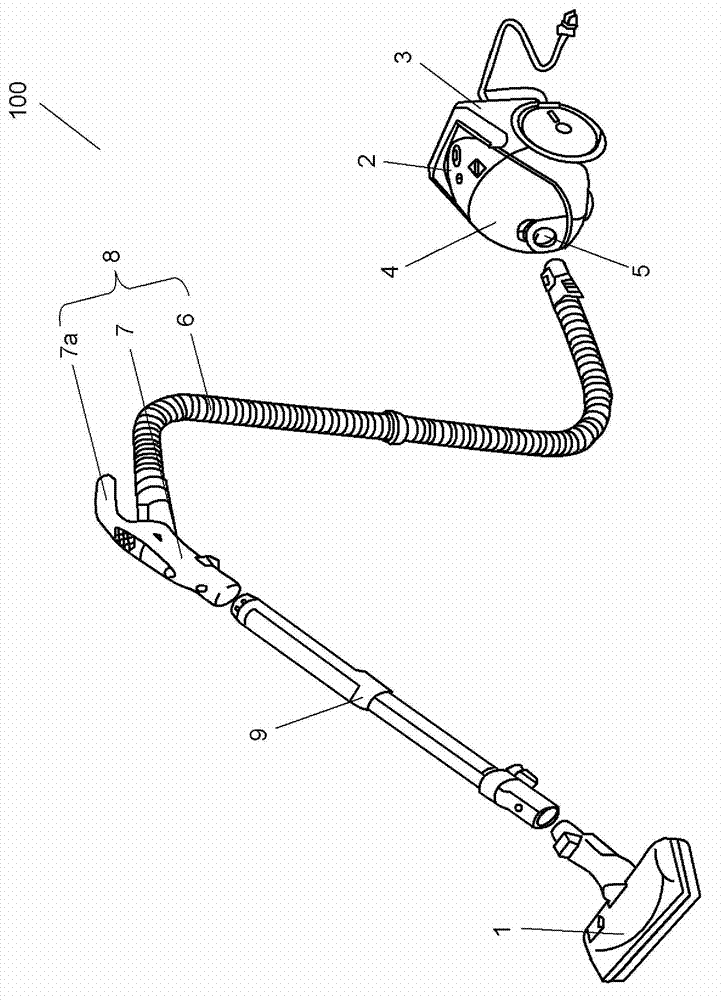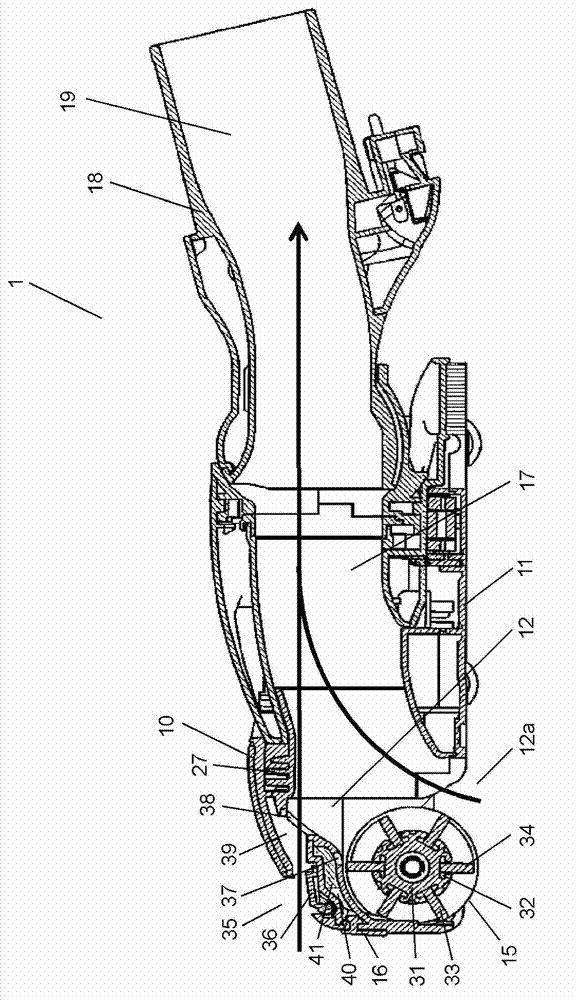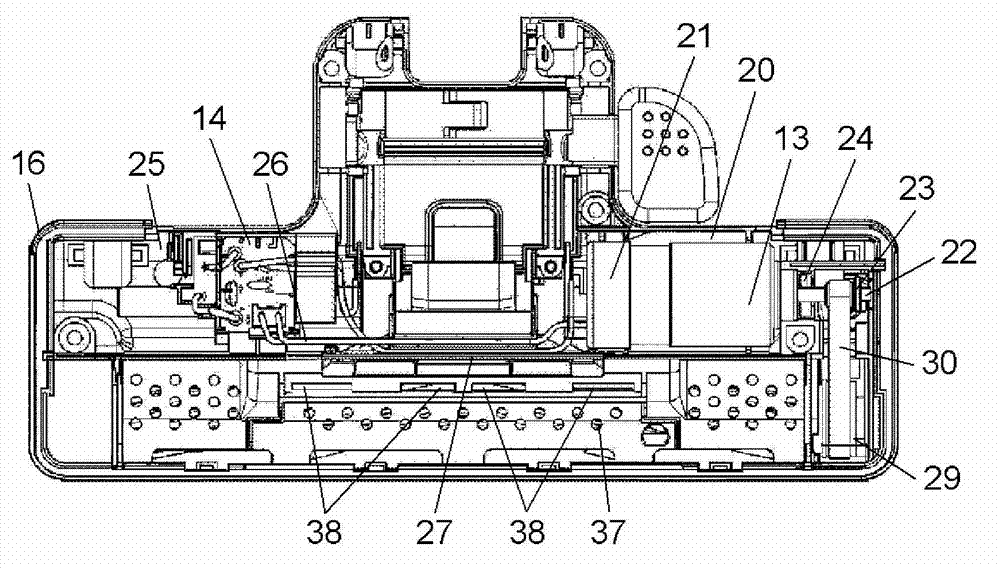Suction tool for electric vacuum cleaner and electric vacuum cleaner provided with same
A technology for suction parts and vacuum cleaners, which is applied in the field of electric vacuum cleaners and suction parts for electric vacuum cleaners. It can solve the problems of increased noise such as wind noise, and achieve the effect of improving quietness and reducing noise.
- Summary
- Abstract
- Description
- Claims
- Application Information
AI Technical Summary
Problems solved by technology
Method used
Image
Examples
Embodiment Construction
[0018] Next, embodiments of the present invention will be described in detail with reference to the drawings.
[0019] figure 1 It is a perspective view showing the overall structure of an electric vacuum cleaner having a suction tool for an electric vacuum cleaner in the embodiment of the present invention. figure 2 It is a side cross-sectional view which shows the structure of the suction tool for electric vacuum cleaners in embodiment of this invention. image 3 It is a top view which shows the structure of the state which removed the upper member of the suction tool for vacuum cleaners in embodiment of this invention. In addition, Figure 4 It is a bottom view which shows the structure of the suction tool for electric vacuum cleaners in embodiment of this invention.
[0020] Such as figure 1 As shown, the electric vacuum cleaner 100 has a cleaner body 2, a suction member 1, a hose 8 and an extension pipe 9.
[0021] The suction member 1 sucks dust on the surface to be cleaned....
PUM
 Login to View More
Login to View More Abstract
Description
Claims
Application Information
 Login to View More
Login to View More - R&D
- Intellectual Property
- Life Sciences
- Materials
- Tech Scout
- Unparalleled Data Quality
- Higher Quality Content
- 60% Fewer Hallucinations
Browse by: Latest US Patents, China's latest patents, Technical Efficacy Thesaurus, Application Domain, Technology Topic, Popular Technical Reports.
© 2025 PatSnap. All rights reserved.Legal|Privacy policy|Modern Slavery Act Transparency Statement|Sitemap|About US| Contact US: help@patsnap.com



